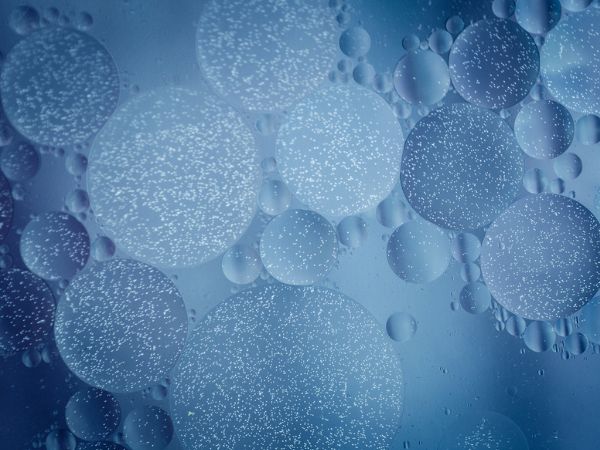Microspheres are small, spherical particles, typically 1 to 1000 micrometers in diameter, used in various scientific and industrial applications. They can be composed of various materials, including polymers, ceramics, glass, and metals.
These novel systems are increasingly important in pharmaceutical applications, although they find application everywhere, from composites to cosmetics. The relative novelty of microspheres, particularly in drug development, puts stringent emphasis on their preparation.

The Necessity of Washing in Microsphere Preparation
Washing is a pivotal initial step in microsphere preparation. It enhances purity by removing unreacted components, surfactants, and other impurities, ensuring the microspheres meet high-quality standards.
Microspheres are employed in various applications, from assays to coatings – although, here, we’ll focus primarily on pharmaceutical applications. The presence of stabilisers, antimicrobials, and other residual substances from the manufacturing process can significantly impact the performance of microspheres. Therefore, washing is not merely a preparatory step but a critical process to enhance the purity and functionality of the microspheres.
This process is also helpful for achieving a uniform size distribution, as it helps disperse aggregates, ensuring homogeneity vital for applications like drug delivery. Additionally, washing prepares microspheres for surface modifications necessary for further functionalisation in applications such as biosensing. It also contributes to the stability of microspheres, necessary for their long-term storage and functionality. In biomedical contexts, washing is imperative for eliminating potentially harmful substances, thus ensuring safety and biocompatibility for in vivo applications. Therefore, washing is not just a cleaning step but a foundational process significantly influencing the overall quality and applicability of microspheres.
This blog explores the significance of optimising the washing process in microsphere preparation, focusing on various methods and their applications to different microspheres.
Common Washing Methods and Their Suitability
Centrifugation: Often used for its simplicity and effectiveness, centrifugation, however, faces challenges when dealing with microspheres smaller than 300nm in diameter. The method uses density differences to separate microspheres from contaminants.
Dialysis and Cross-Flow Filtration: These methods are universally applicable to all microspheres. Dialysis, in particular, is effective for gently removing small molecules, while cross-flow filtration is beneficial for larger-scale applications.
Mixed-Bed Ion Exchange: This method is suitable for removing ionic contaminants, thus enhancing the purity of the microspheres. It is especially beneficial when dealing with charged particles.
Microsphere Washing with PSL’s MicroSphere Refiner
The MSR™ MicroSphere Refiner from Powder Systems Limited (PSL) represents a significant advancement in the field of microsphere preparation and washing. This equipment, designed under current Good Manufacturing Practices (cGMP) guidelines, is tailored for drug developers and manufacturers, facilitating aseptic processes at various scales. The system’s uniqueness lies in its Quality-by-Design (QbD) approach, which meticulously considers the characteristics and behaviours of microspheres.
Features and Benefits of the MSR™
Microsphere washing often involves several product transfer steps and various different solvents. This invariably leads to considerable product loss and reduced yield. The MSR™ system addresses this aspect through consolidation. It brings the entire washing process into a single, unified operation. Costly transfers are thus eliminated, enabling process engineers to maximise product integrity and yields.
Part of the MSR™’s transformative capabilities is its advanced automation. Traditional methods depend heavily on operator expertise and procedural compliance. Integrating sophisticated automation eliminates the risk of variability associated with human error. So, consistency is guaranteed. This is critical in maintaining the quality and purity of microspheres, which are essential in drug development.
Further enhancing the MSR™’s capabilities is the integration of Process Analytical Technology (PAT). This feature allows for real-time monitoring and control during the washing process. The MSR™ can determine the endpoint of washing cycles, using in-built conductivity meters. This precision drives down operational costs in several ways. Notably: solvent consumption is reduced while product quality is increased. Integrating PAT with the system’s automation framework creates a robust mechanism for the strictest quality assurance and control (QA/QC) protocols.
Scalability is another key advantage of the MSR™ system. Small scale procedures with fully optimised washing cycles can be seamlessly scaled to larger production volumes without loss of efficiency of effectiveness. Such scalability is critical in drug development. Moving from R&D to commercial production often presents challenges. With the MSR™ system, we aim to mitigate those problems.
Find Out More
The MSR™ MicroSphere Refiner stands out as a comprehensive, efficient, and scalable solution for microsphere preparation, addressing the complexities and stringent requirements of the pharmaceutical industry. Contact a team member today for more information and how our MSR™ system can benefit your production process. Discover the difference that PSL’s advanced technology can make in your operations.
